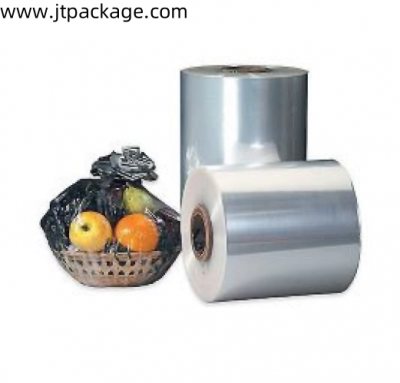Enhancing Packaging Efficiency and Sustainability: A Comprehens
-
Posted by jer zxc - Filed in Technology - #Polyolefin Shrink Film #POF Shrink Film #Polyolefin (POF) Shrink Film - 9 views
What Makes POF Shrink Film a Practical Choice for Modern Packaging Solutions?
POF shrink film, a thermoplastic polymer blend of polyethylene and polypropylene, has gained popularity across various industries due to its unique combination of attributes:
1.Enhanced Durability and Strength: POF shrink film offers superior puncture resistance and tear strength compared to traditional PVC films, ensuring that products are well-protected during transit and handling.
2.Clarity and Aesthetic Appeal: The film's high clarity provides an excellent display of the packaged product, enhancing its shelf appeal and aiding in brand differentiation.
3.Versatility in Applications: Suitable for a wide range of products, from food items to electronics, POF shrink film adapts to various packaging needs, including bundling, tamper-evident seals, and unitizing.
4.Cost-Effectiveness: Despite its advanced properties, POF shrink film is competitively priced, offering businesses a balance between performance and budget.
These attributes make POF shrink film a practical choice for companies aiming to optimize their packaging processes without compromising on quality or cost.
What You Should Know Before Switching to Crosslinked Shrink Film in Packaging
Crosslinked polyolefin shrink film represents an advancement over standard POF films, offering enhanced performance characteristics:
1.Improved Shrink Force and Seal Integrity: The crosslinking process enhances the film's ability to shrink uniformly and tightly around products, providing a secure and tamper-evident seal.
2.Increased Strength and Puncture Resistance: Crosslinked films exhibit greater resistance to punctures and tears, making them suitable for heavy-duty applications and products with sharp edges.
3.Compatibility with High-Speed Packaging Lines: These films perform well in automated packaging systems, maintaining consistent results even at high speeds.
4.Consideration of Cost and Equipment Requirements: While offering enhanced performance, crosslinked shrink films may come at a higher initial cost and may require specific equipment settings.
Before transitioning to crosslinked shrink film, businesses should assess their specific packaging needs, equipment capabilities, and budget constraints to determine the suitability of this advanced material.
How Polyolefin Shrink Film Plays a Role in Eco-Friendly Packaging Trends
As sustainability becomes a central focus in packaging, polyolefin shrink film aligns with eco-friendly initiatives through:
1.Recyclability: POF shrink film is recyclable, reducing its environmental impact compared to non-recyclable materials.
2.Reduced Carbon Footprint: The film's low-temperature shrinkage properties contribute to energy savings during the packaging process, aligning with green manufacturing practices.
3.Compliance with Environmental Standards: Manufacturers are increasingly producing POF shrink films that meet global environmental standards, supporting businesses in their sustainability goals.
4.Consumer Preference for Sustainable Packaging: End-users are becoming more conscious of packaging materials, favoring products that utilize eco-friendly solutions, thereby enhancing brand image and consumer trust.
By adopting polyolefin shrink film, companies can contribute to environmental conservation while meeting consumer demand for sustainable packaging options.
When to Choose Crosslinked Shrink Film Over Standard POF
Selecting the appropriate shrink film depends on specific packaging requirements:
1.Product Characteristics: For products with sharp edges or heavy weights, crosslinked shrink film provides the necessary strength and protection.
2.Packaging Environment: In high-speed automated packaging lines, crosslinked films ensure consistent performance and efficiency.
3.Budget Considerations: While crosslinked films offer enhanced properties, they may come at a higher cost; businesses should evaluate their budget and cost-benefit ratio.
4.Sustainability Goals: If environmental impact is a priority, both standard and crosslinked POF films offer recyclable options, but businesses should consider the overall lifecycle impact.
By carefully assessing these factors, businesses can make informed decisions on whether to opt for standard POF or crosslinked shrink film to meet their packaging needs.
Conclusion
Incorporating POF shrink film into packaging strategies offers a blend of durability, aesthetic appeal, and environmental responsibility. Whether opting for standard or crosslinked variants, businesses can enhance product protection, streamline packaging processes, and align with sustainability trends. For more information on high-quality shrink film solutions, visit https://www.jtpackage.com/.
